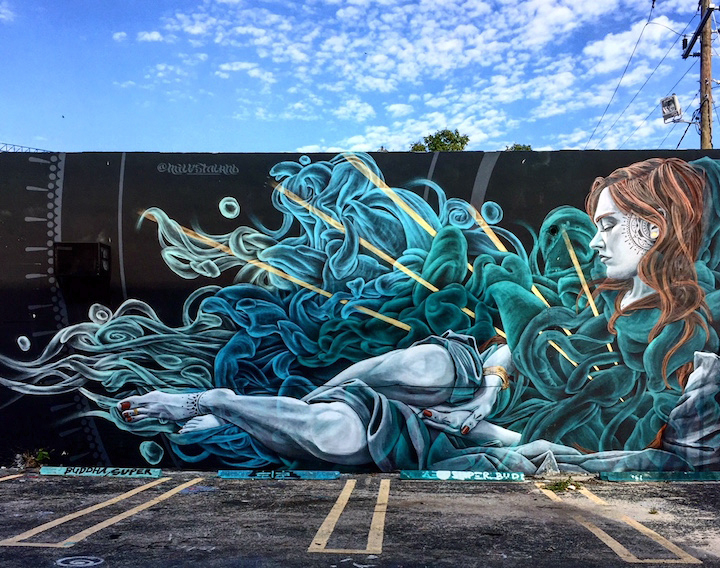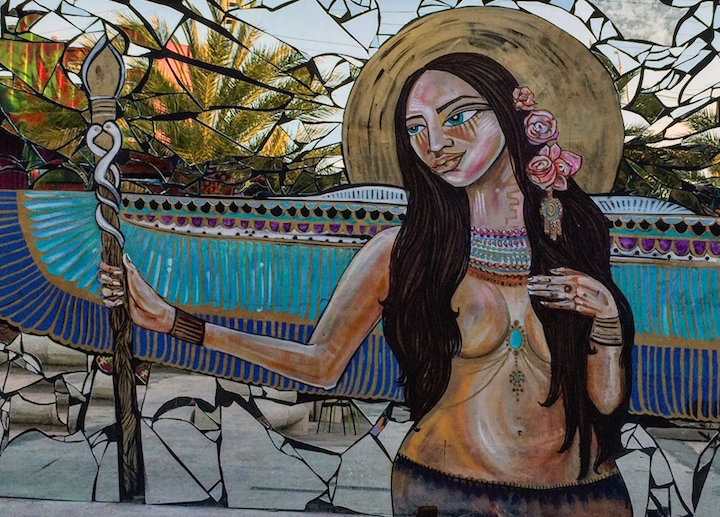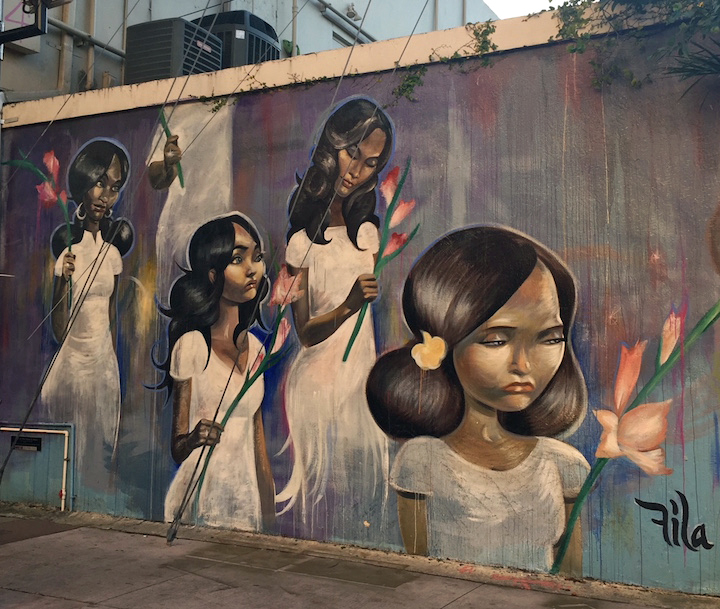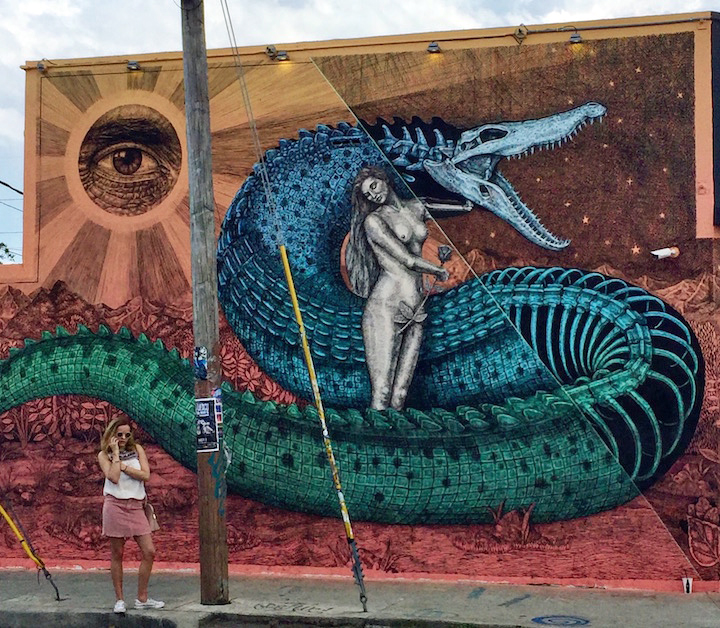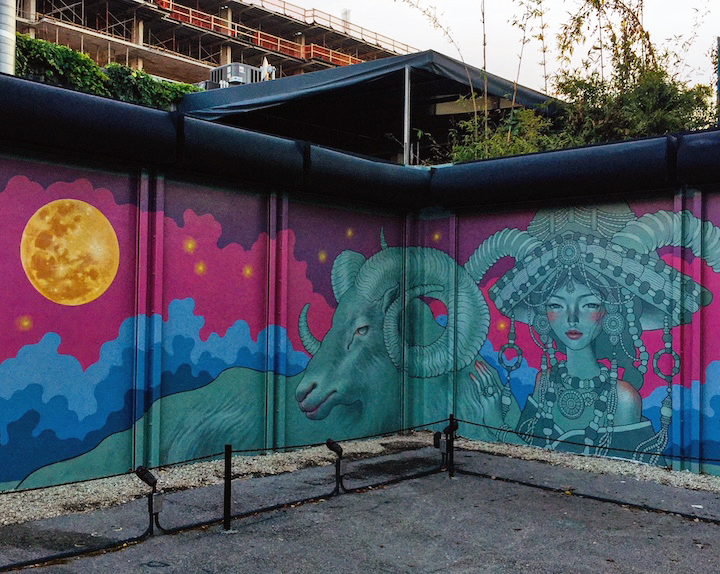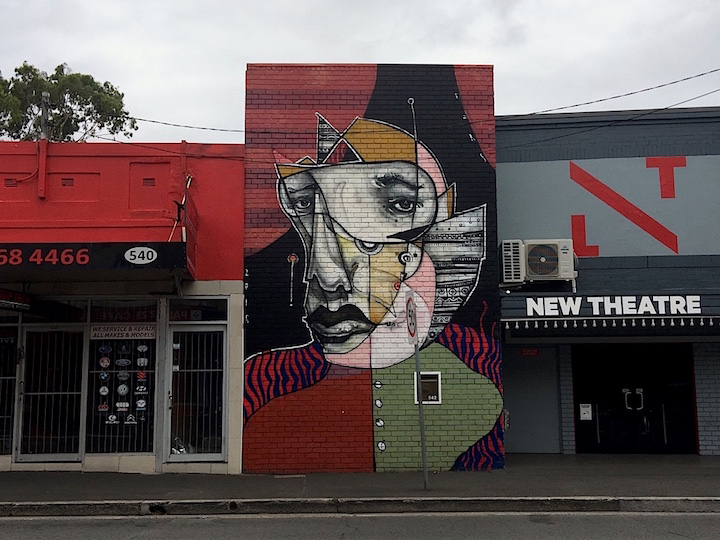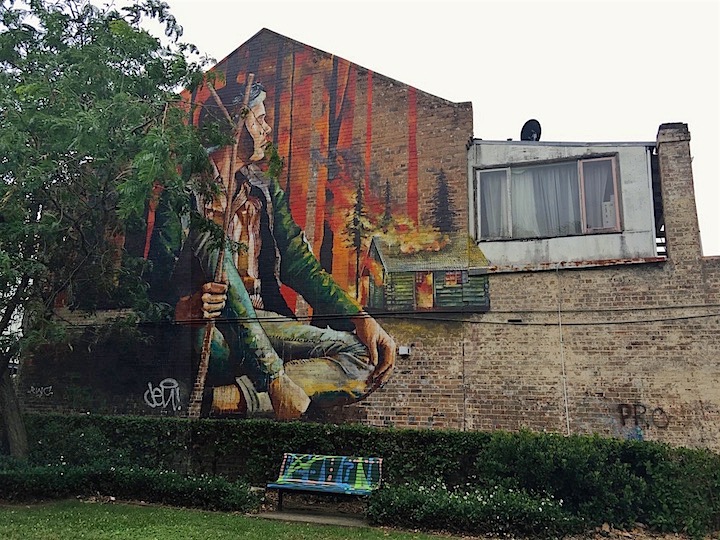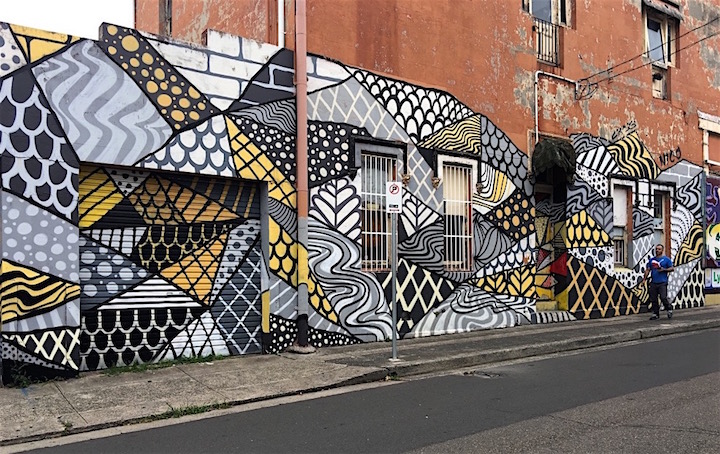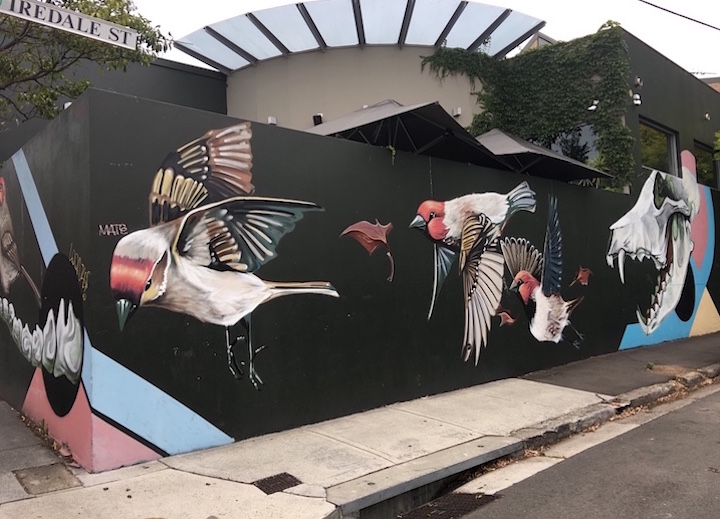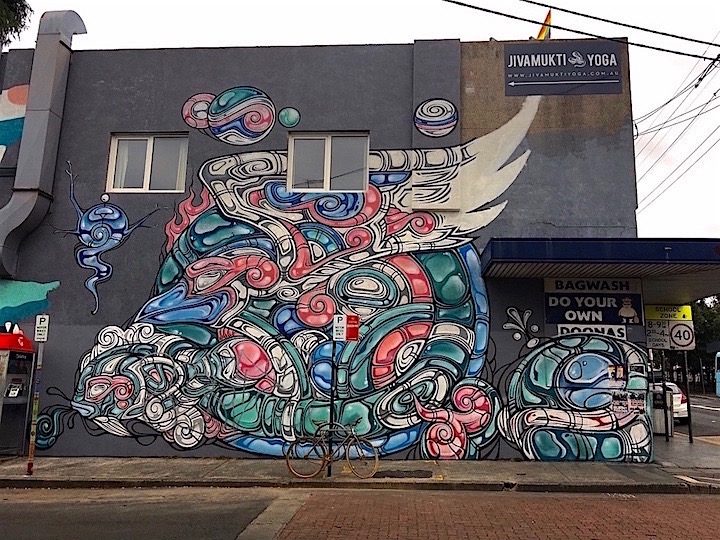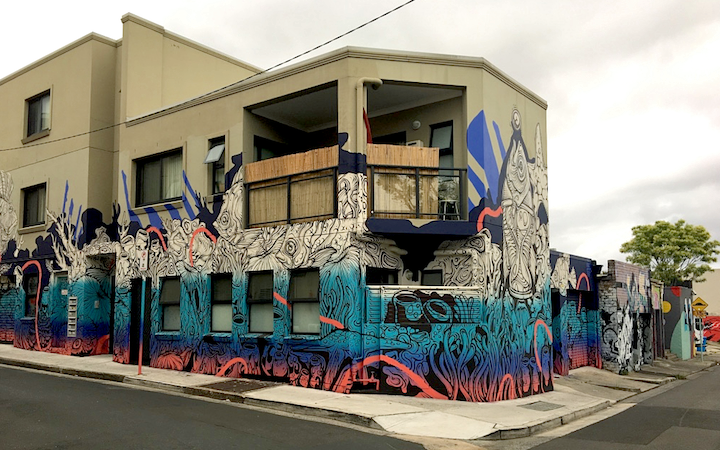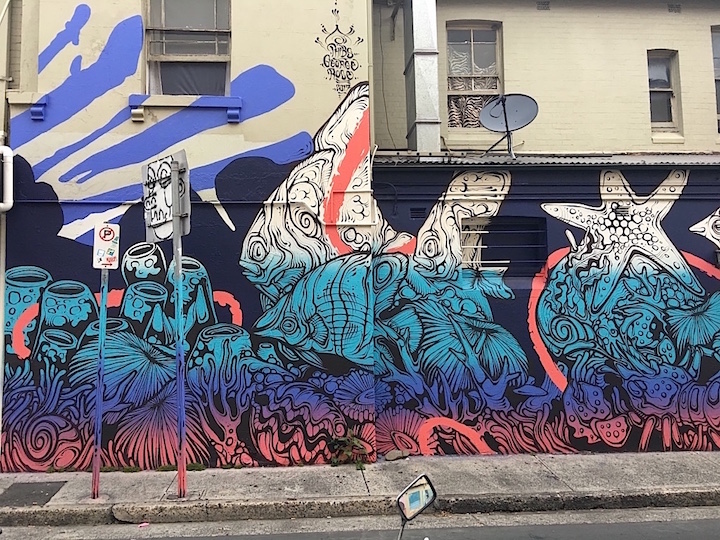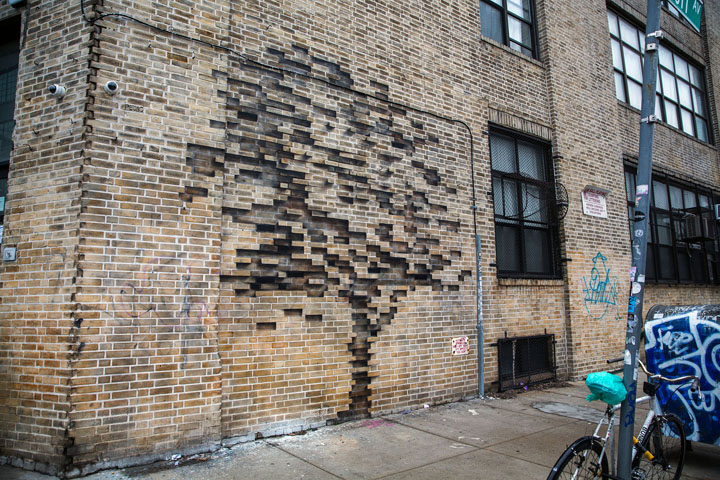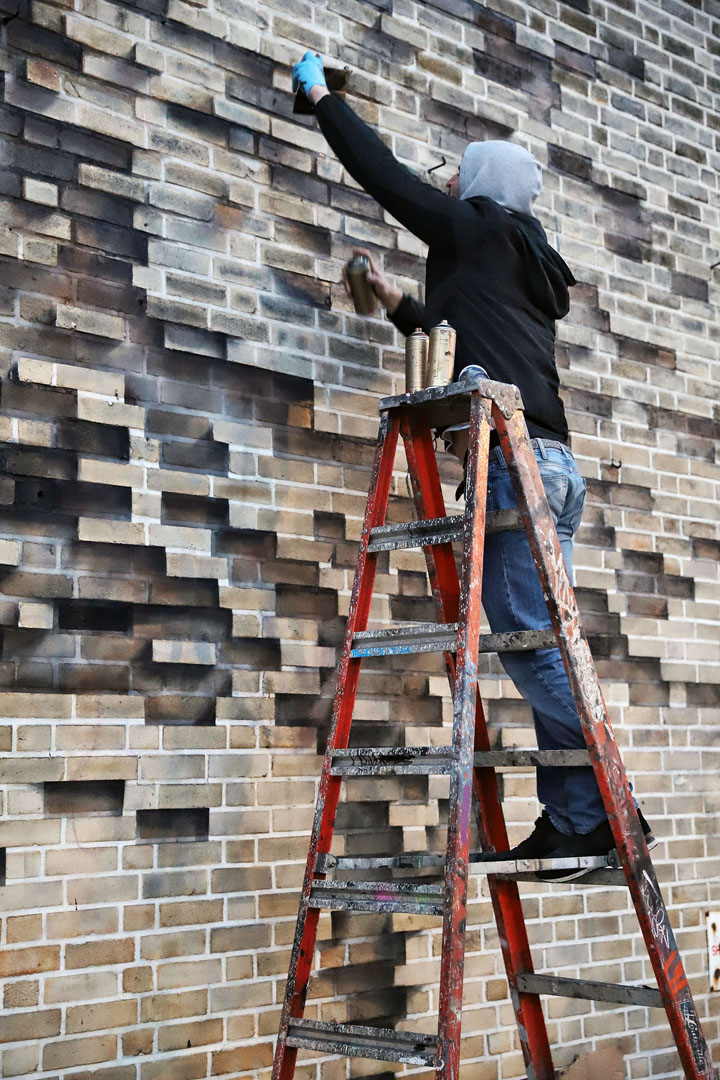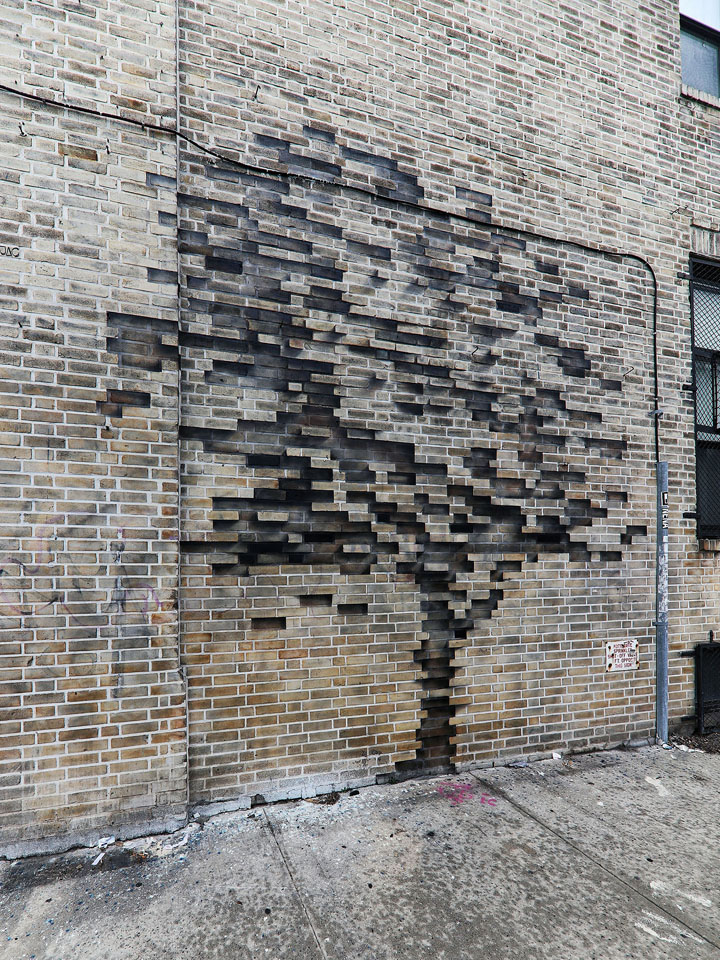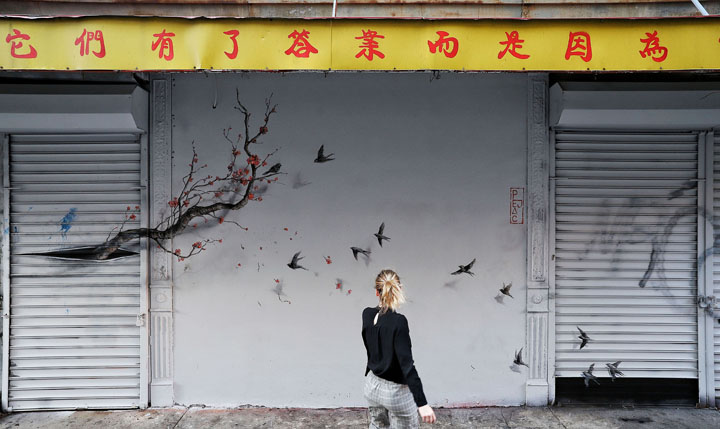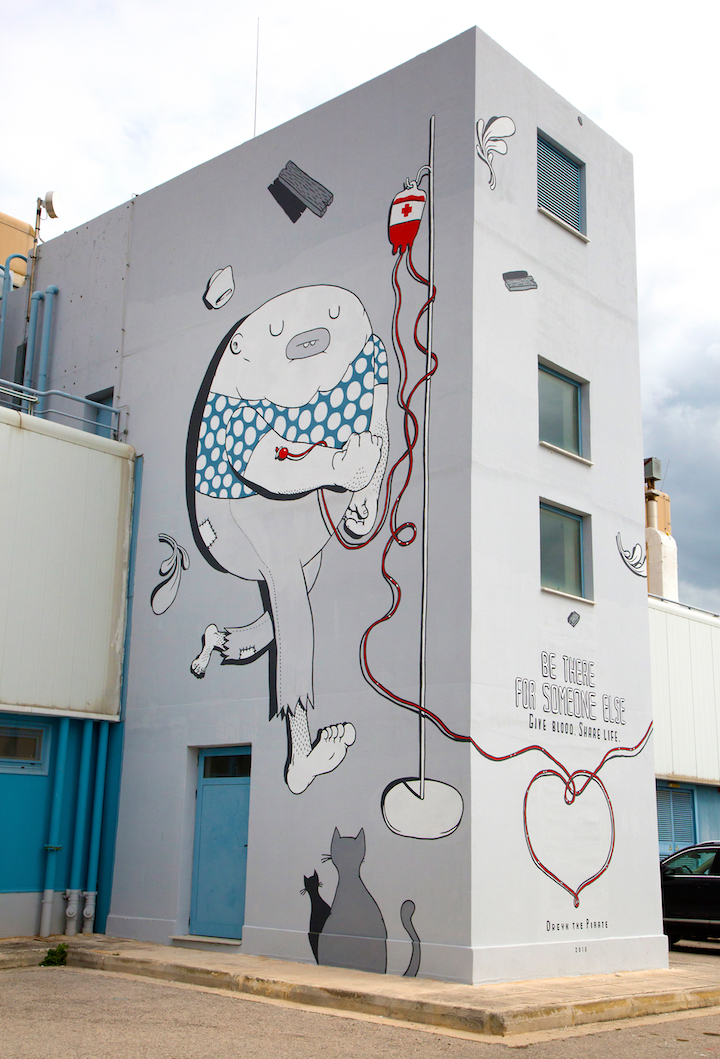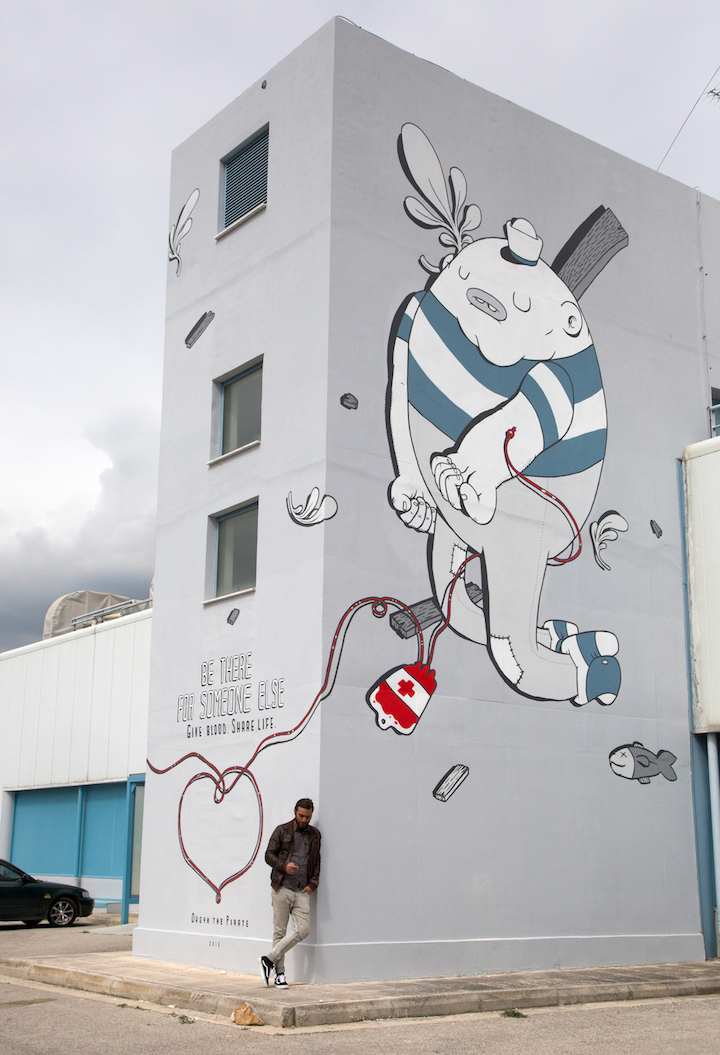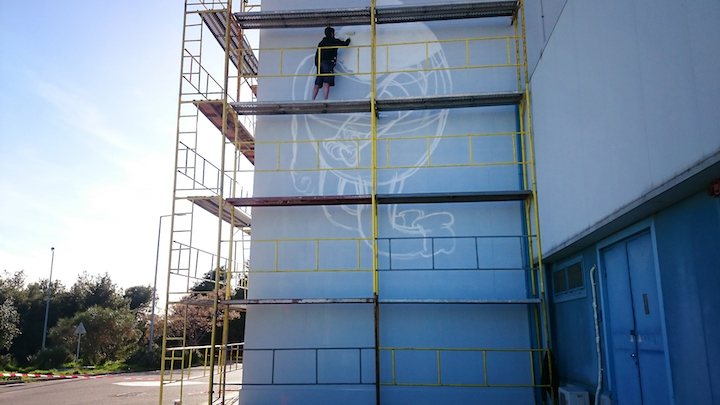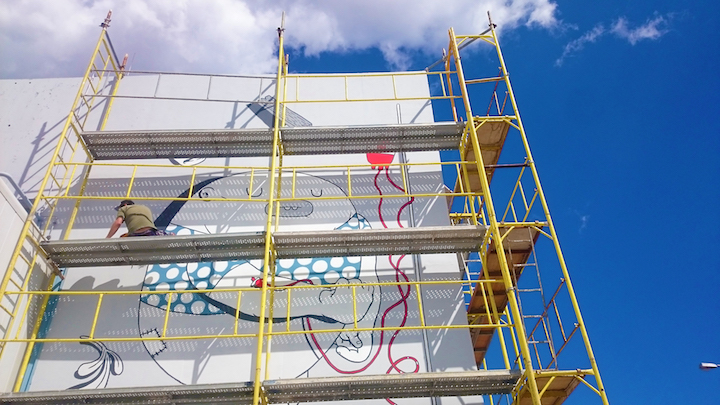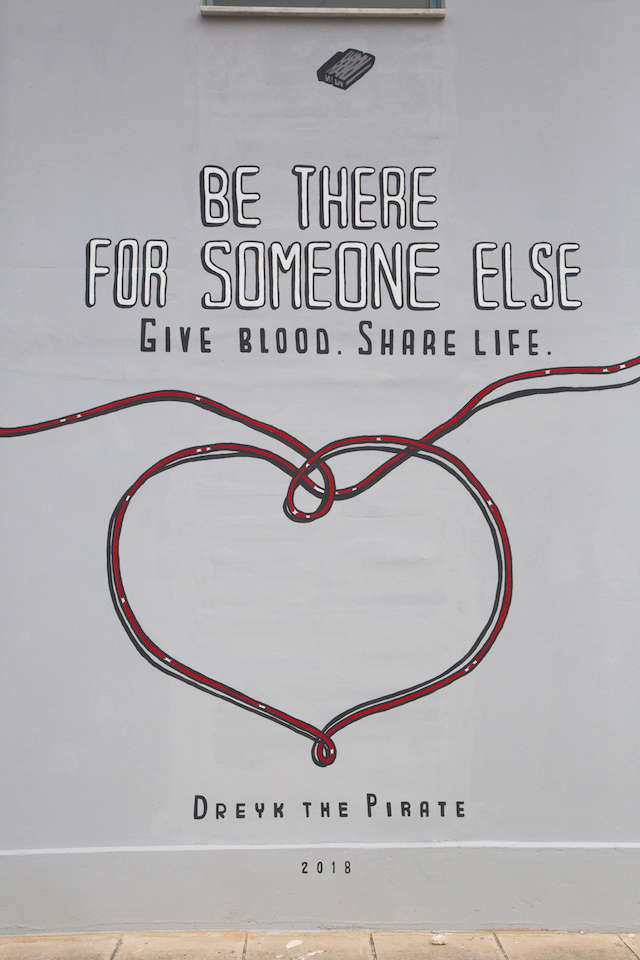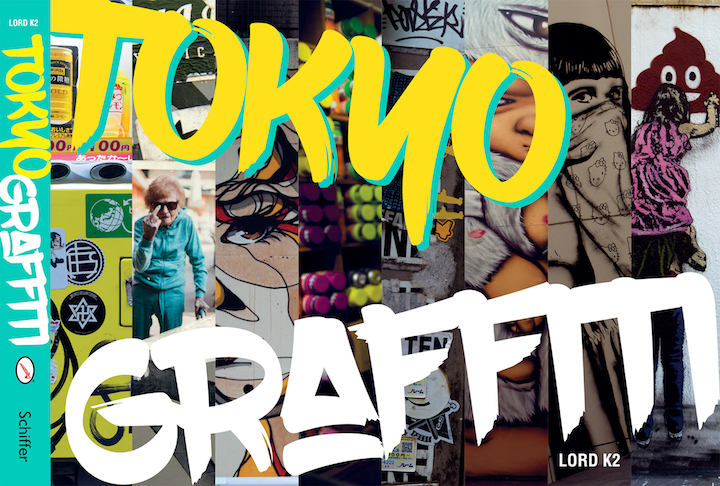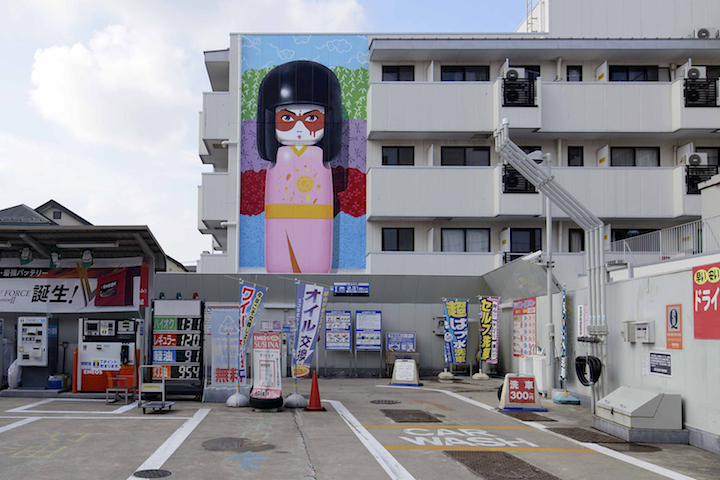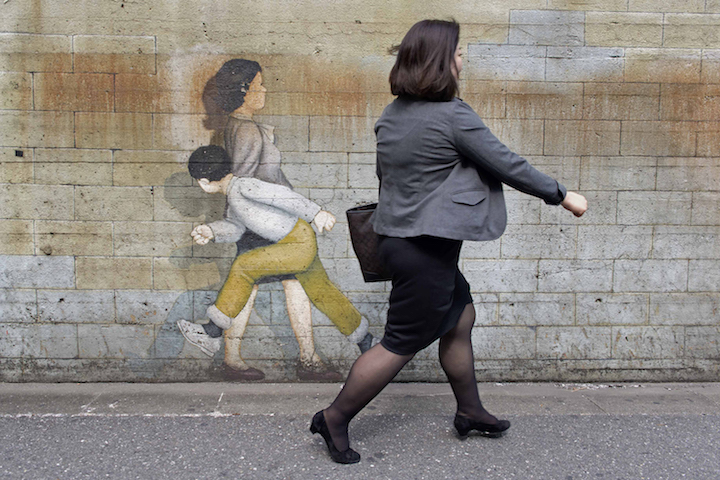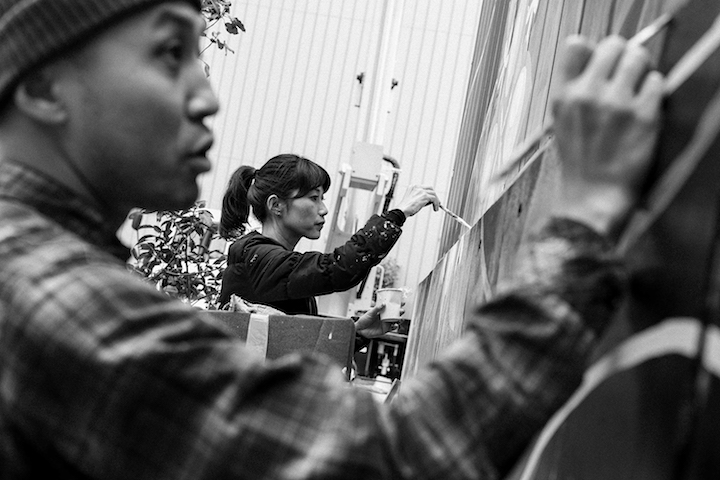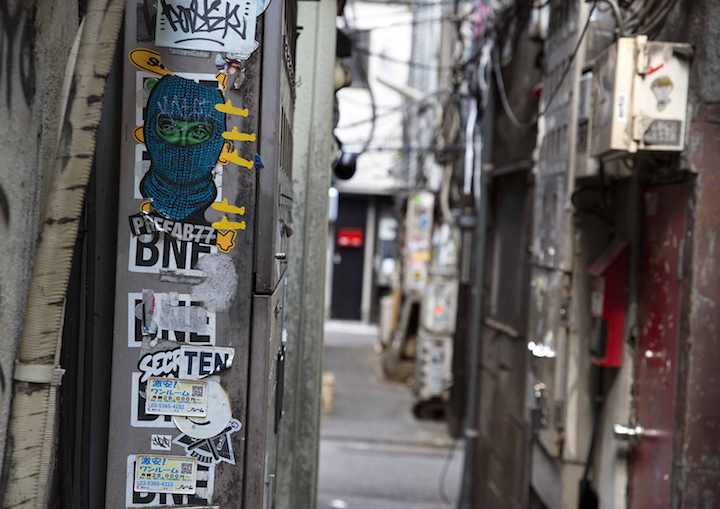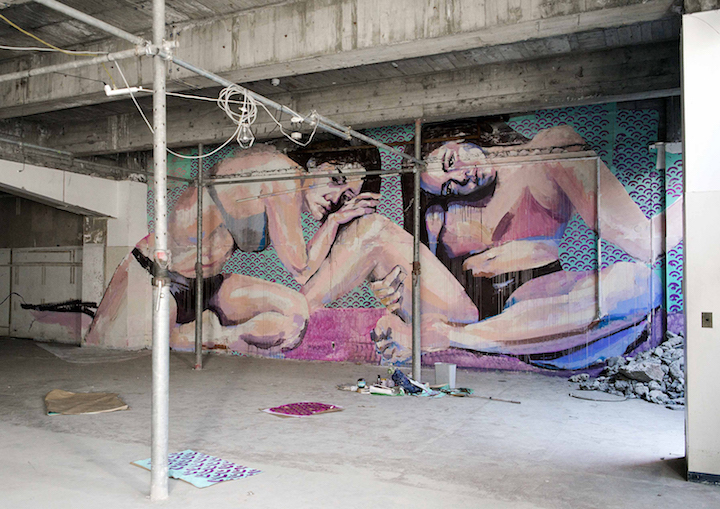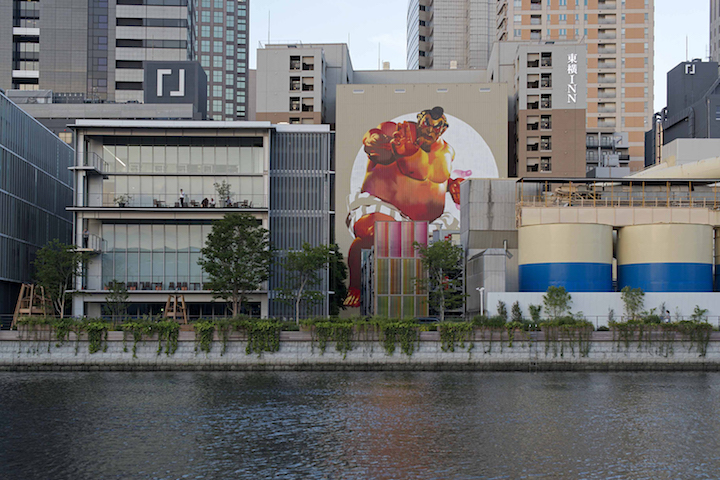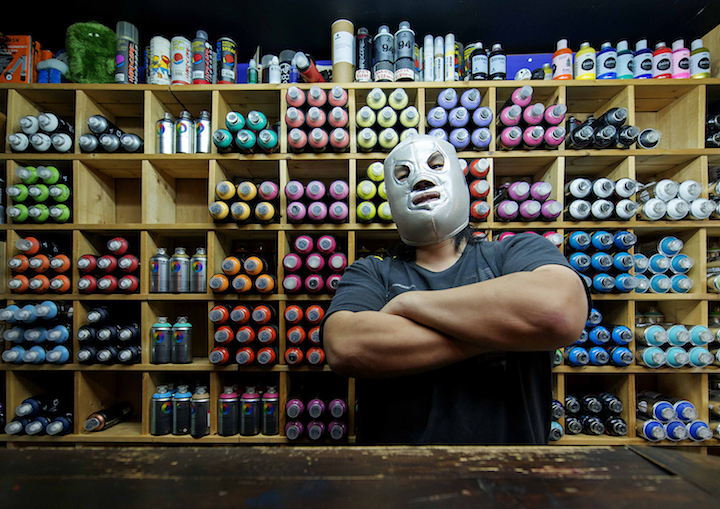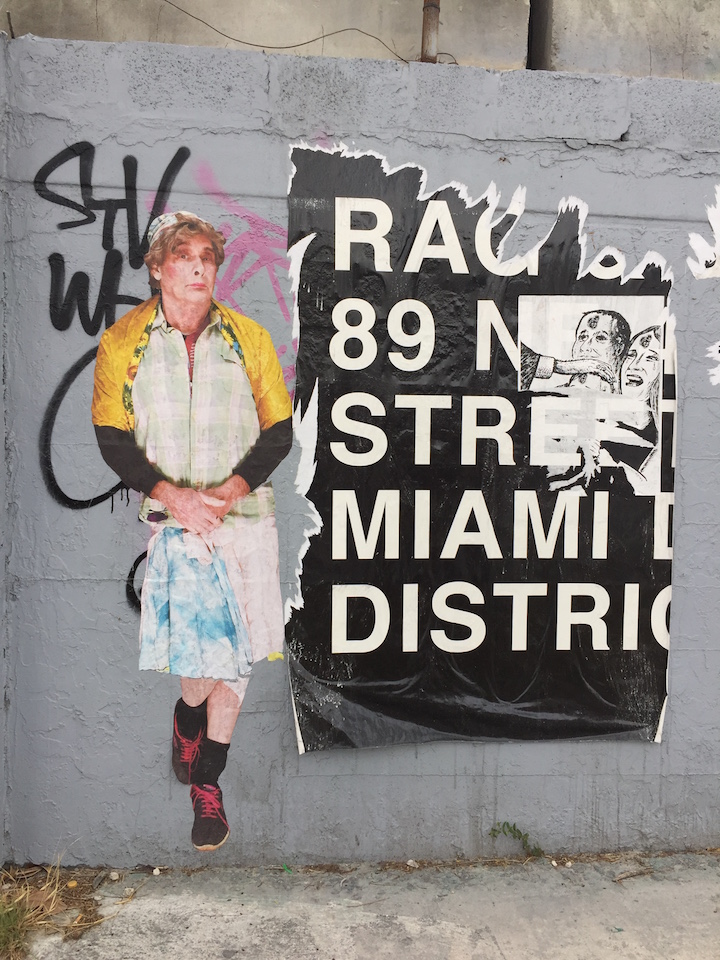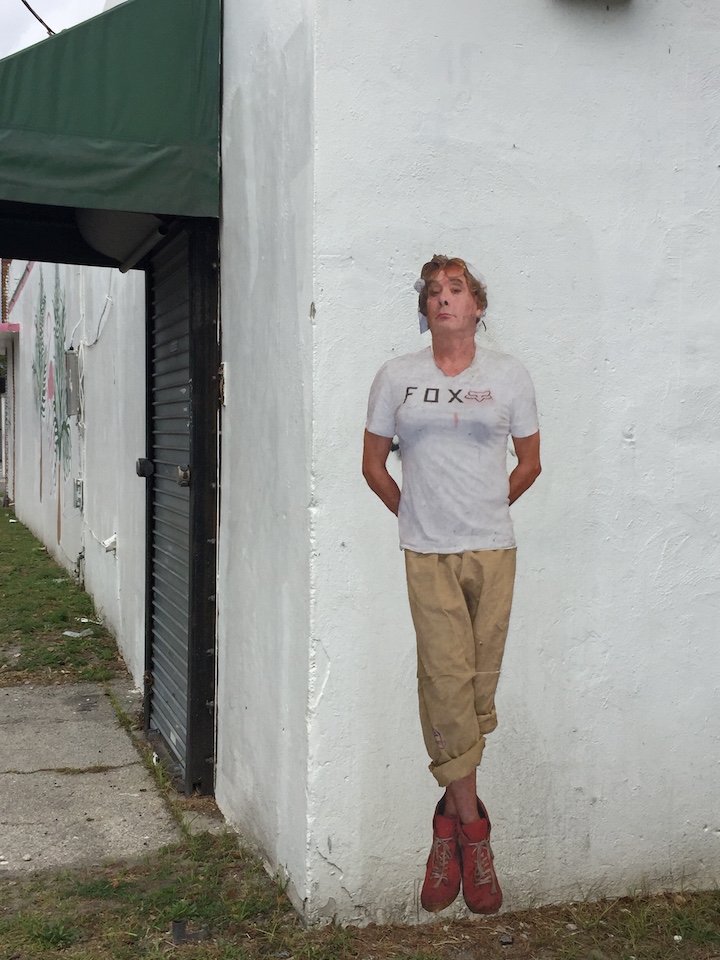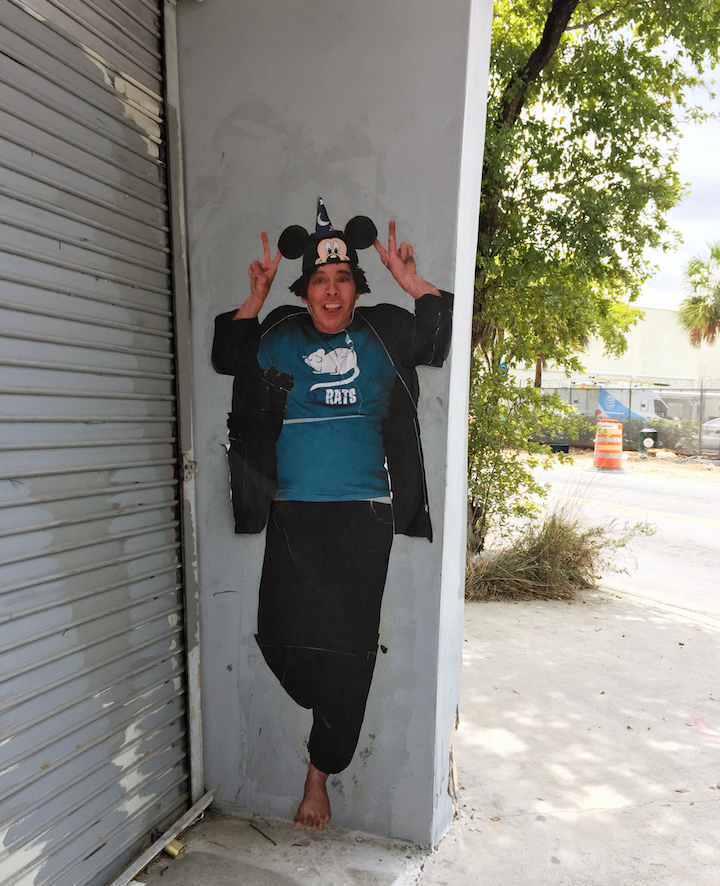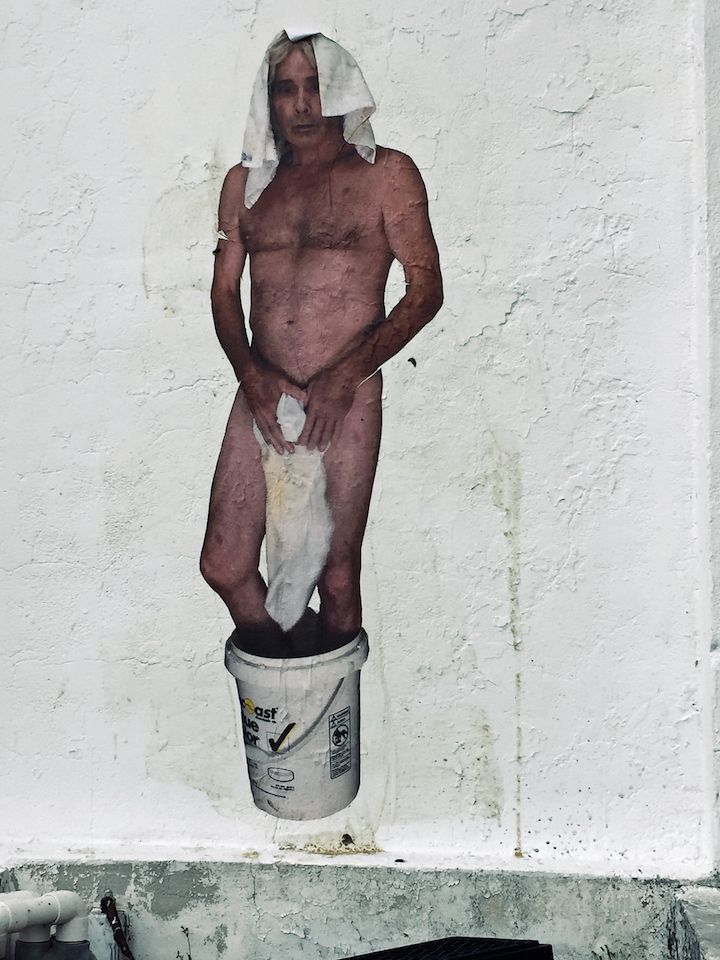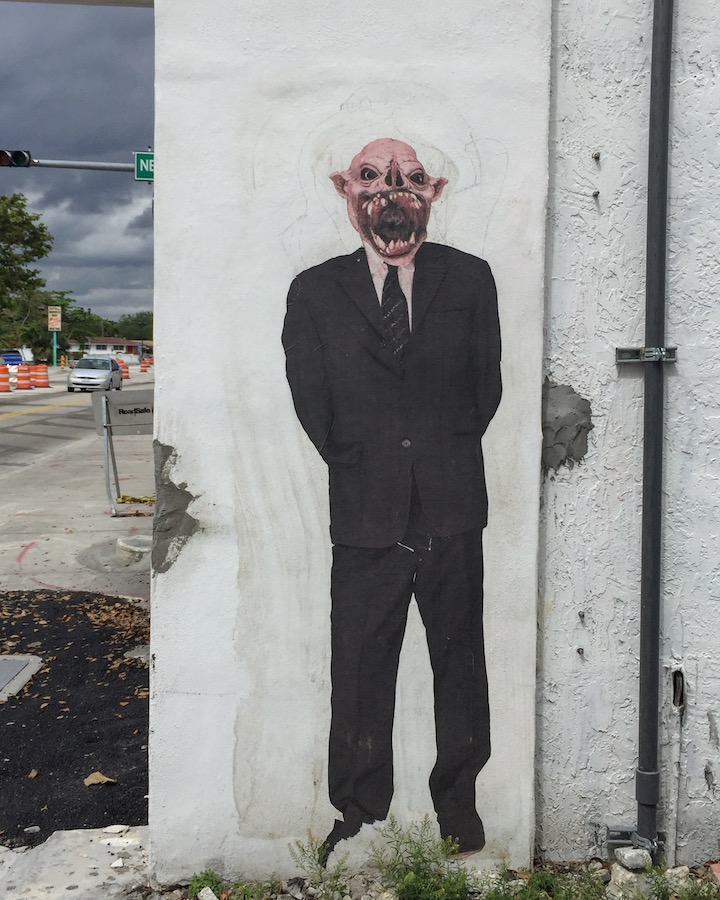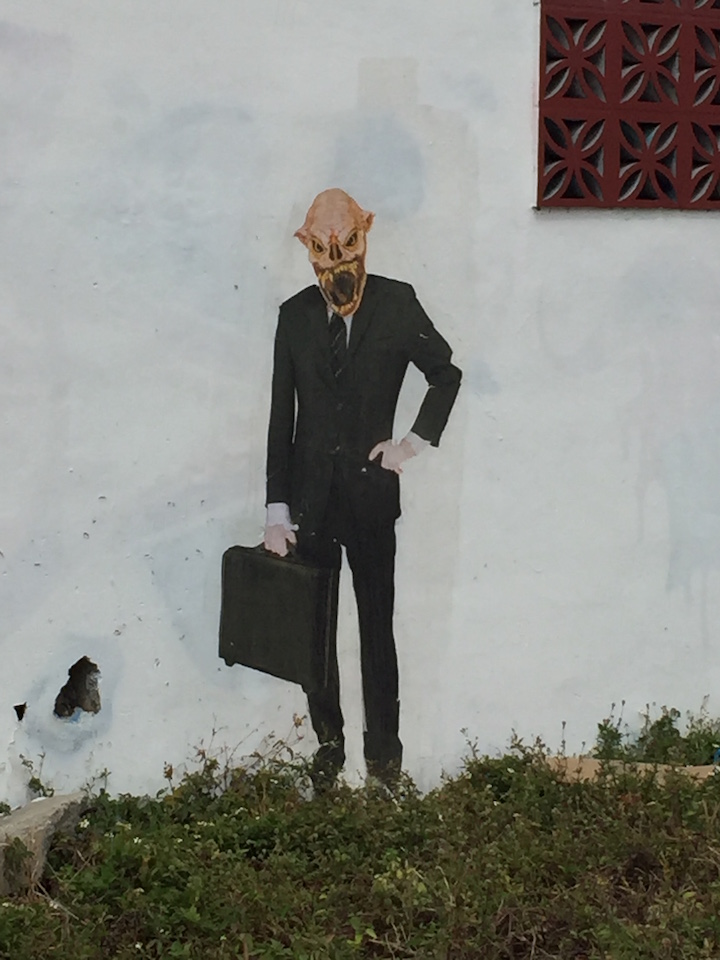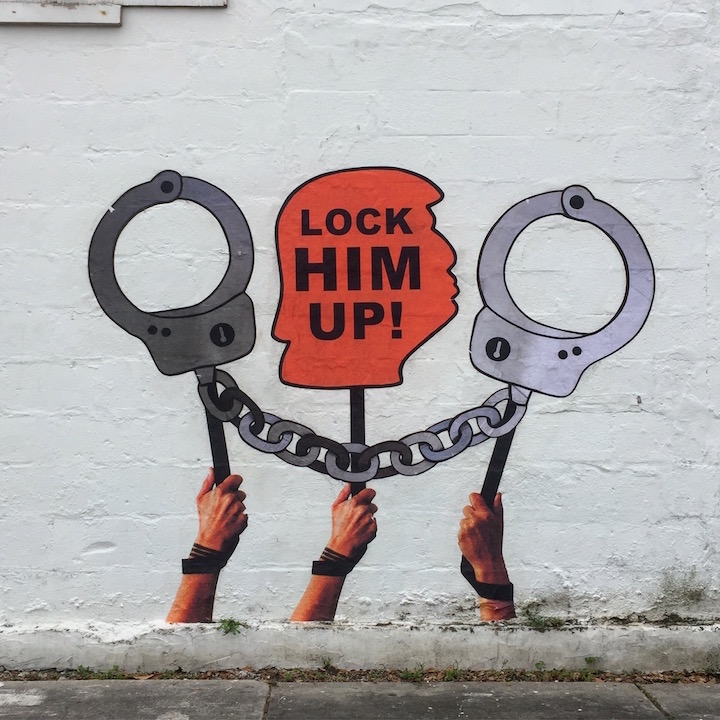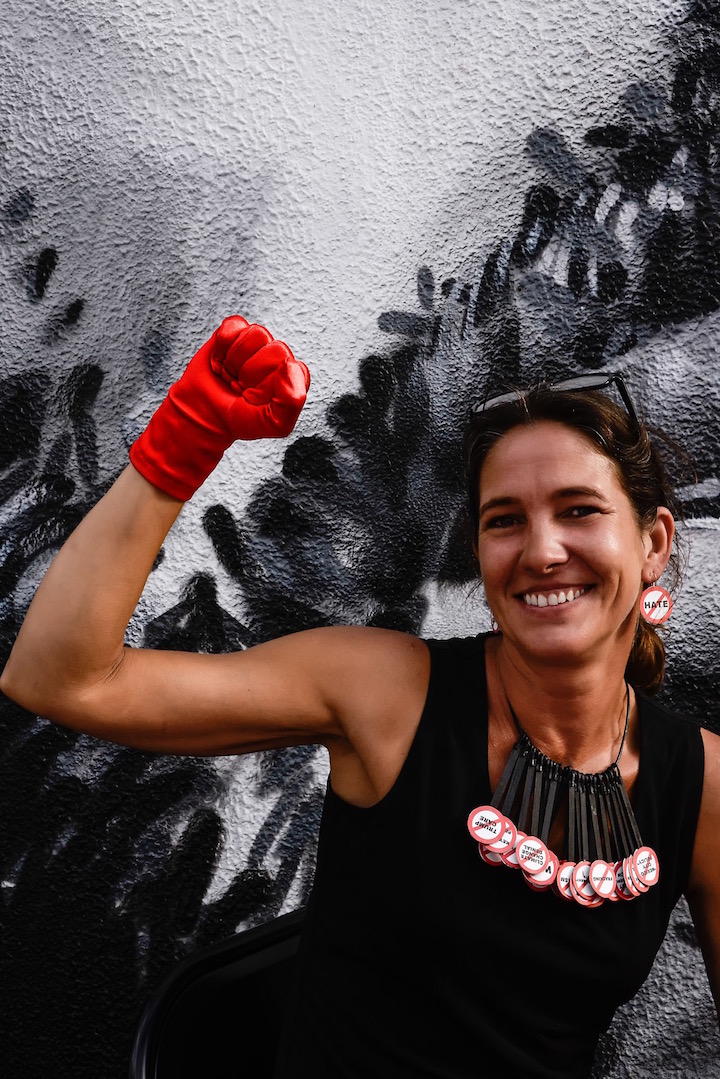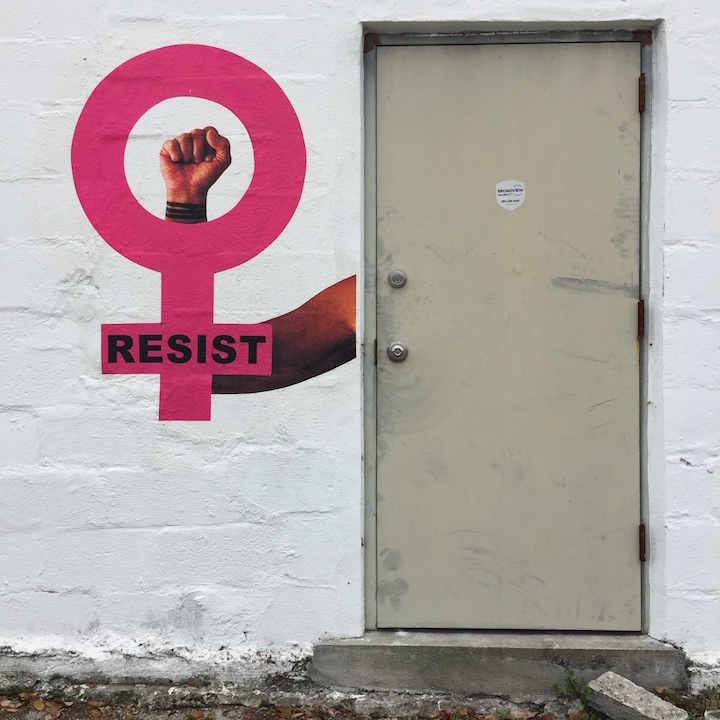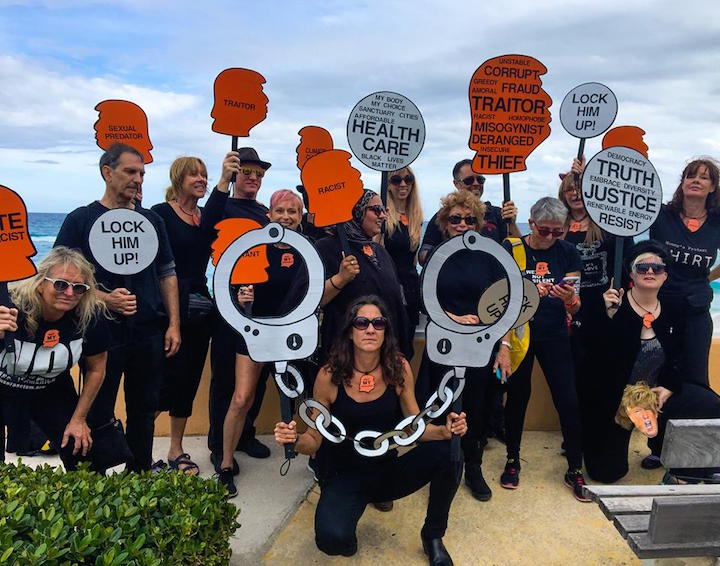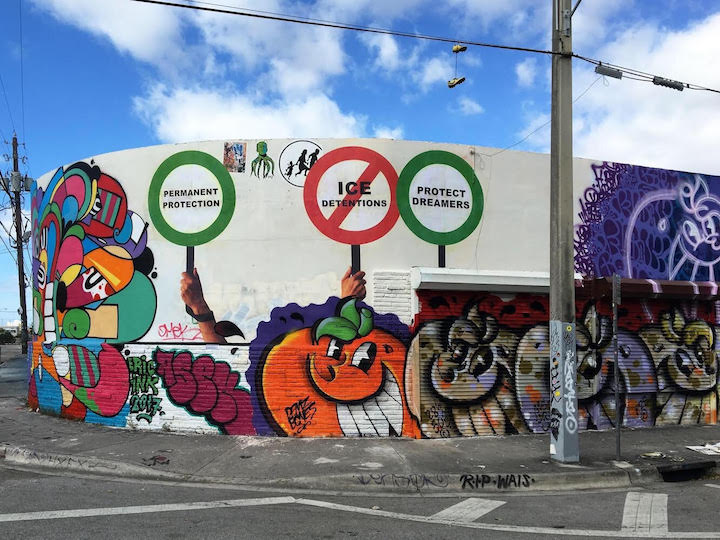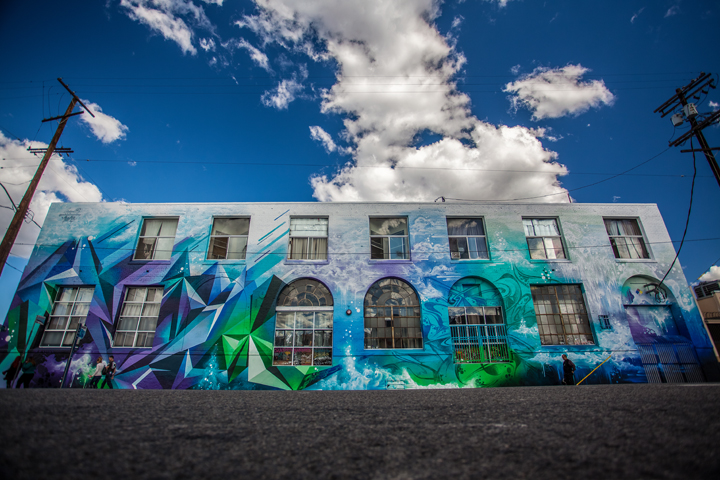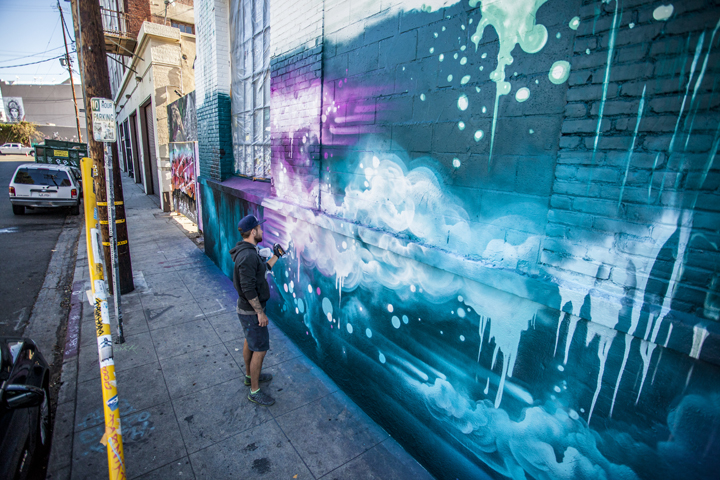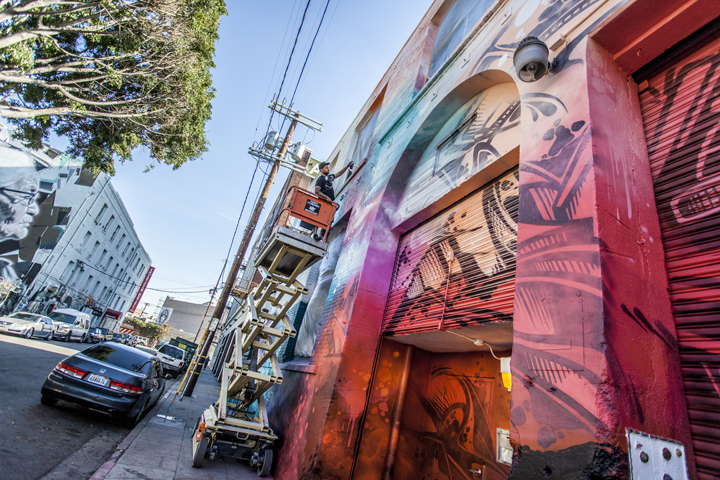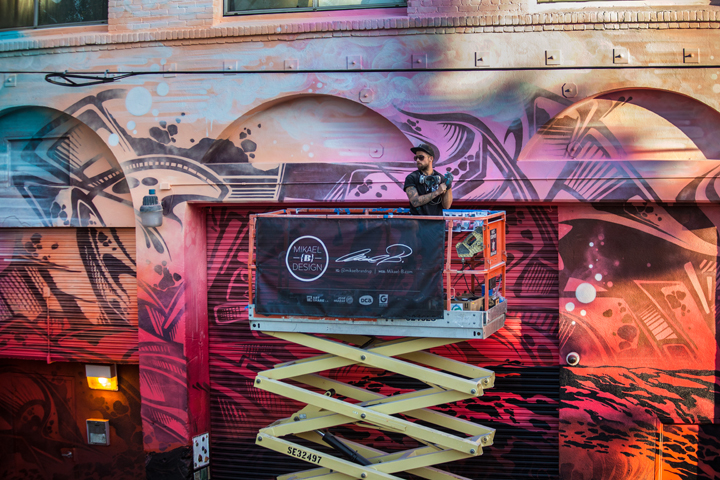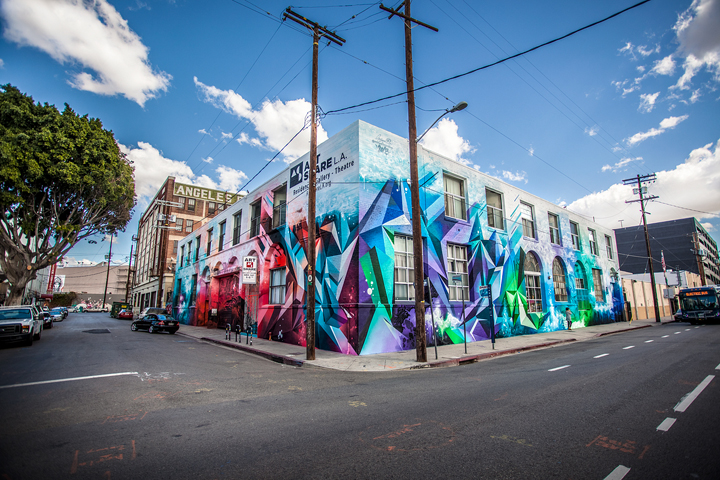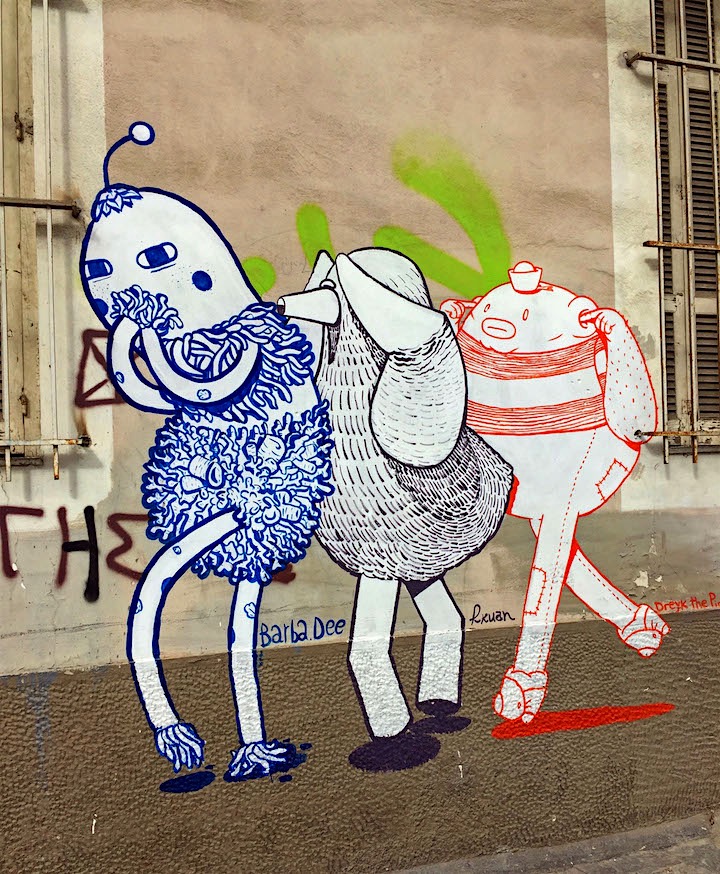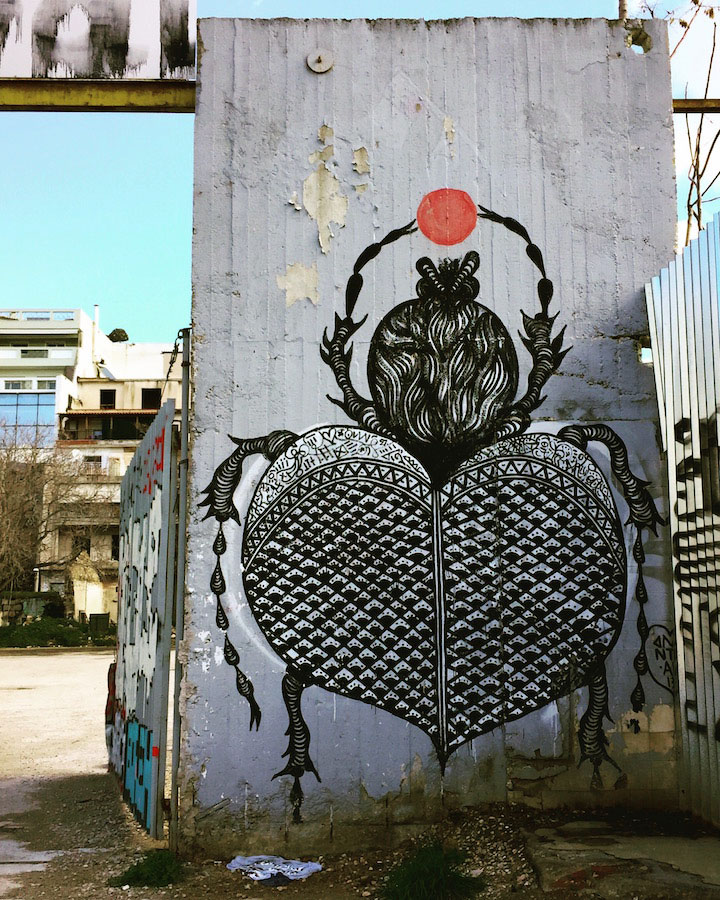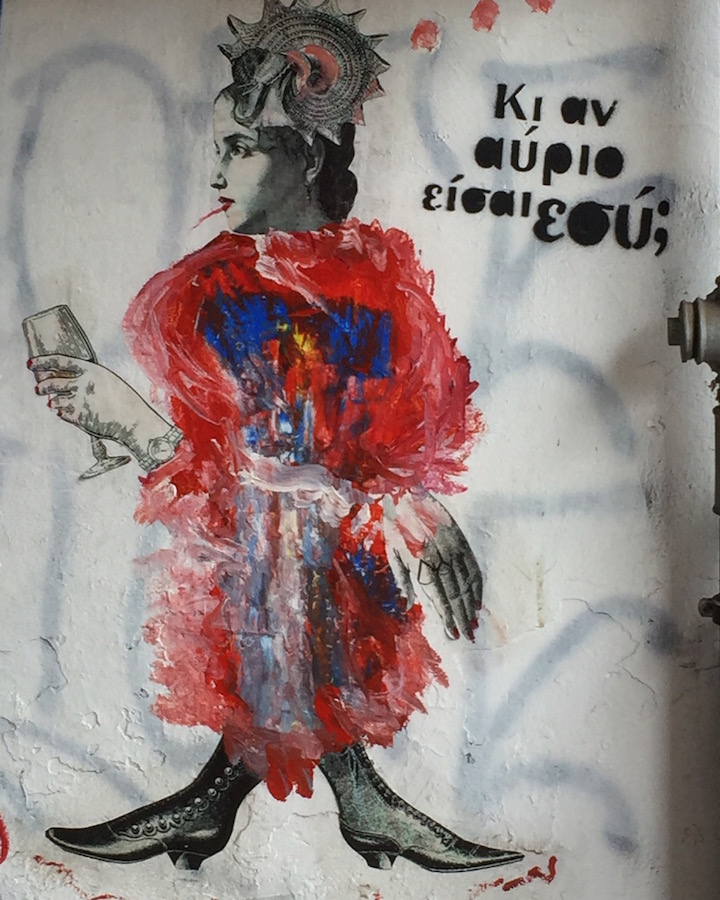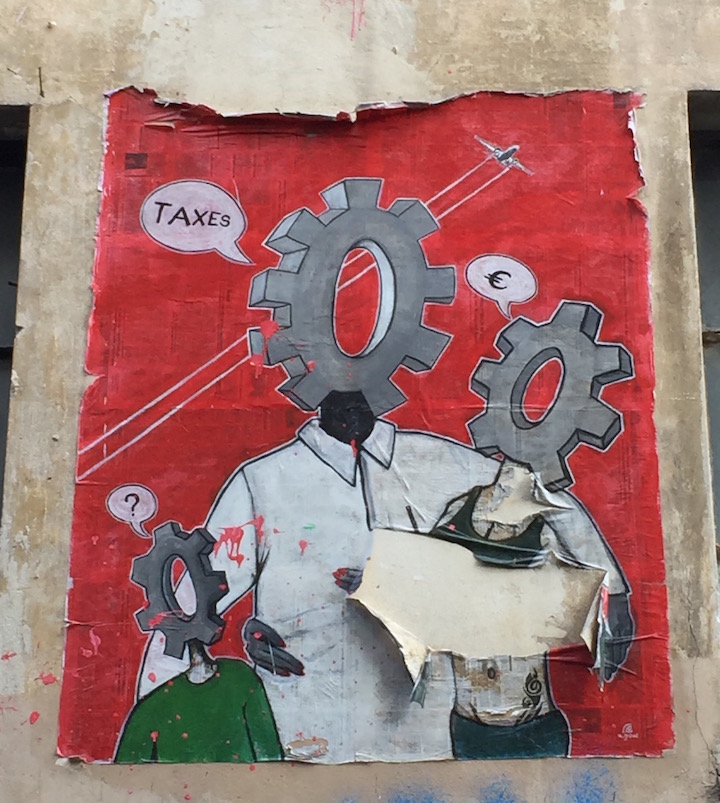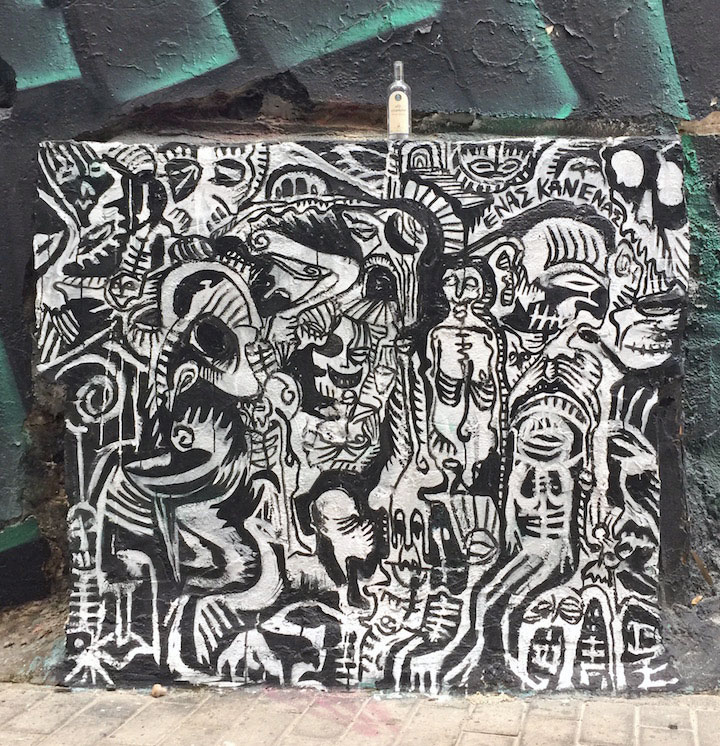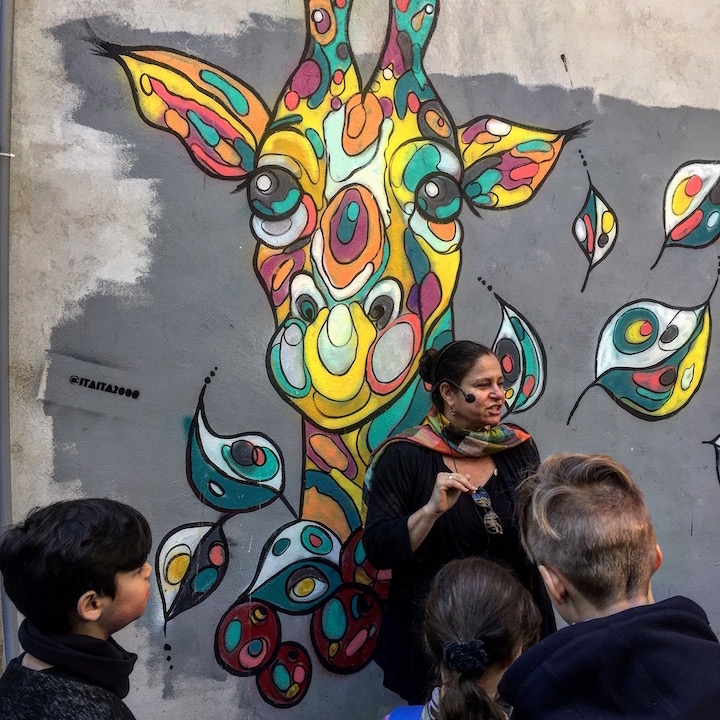
With her deep passion for street art and remarkable knowledge of the Israeli street art scene, Dina Segev is the quintessential street art tour guide. Whether conducting workshops for school-age children, or lecturing adults about graffiti and street art or simply guiding groups of visitors through the streets of Tel Aviv, her enthusiasm is contagious. While in Tel Aviv earlier this year, I had the opportunity to observe Dina as she conducted a tour for school-age children and, then, speak to her.
When did you first become interested in street art?
As an artist, I’d always been interested in art, and I had been giving private lessons to students in my studio for over 20 years. But I wasn’t aware — for quite awhile — what was happening on the streets. One day, a friend gave me a tour of Florentin, along with a spray can, as a birthday present. I instantly fell in love with what I saw. That was back in 2013. I loved it so much, in fact, that I wanted to take my friends on a tour. And so I took 16 friends on a street art tour of Florentin. It was so interesting that my husband asked me to do it for his company’s clients. And soon afterwards, I took my mother – along with her grandchildren – on a steet art tour for her 75th birthday. Two years later, I closed my studio. Now the streets are my studio.
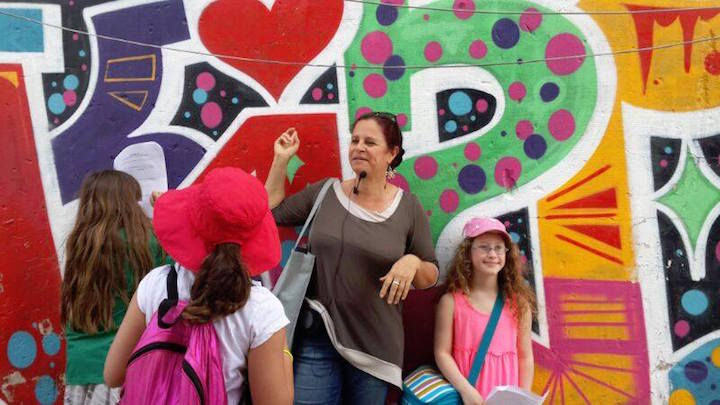
Among those artists whose works you’ve encountered on the streets, do any stand out?
There are many. Among the first generation artists who come to mind are: Klone, Know Hope, Zero Cents, Adi Sened, Latzi, Foma and Ame 72. Second generation artists include: Dede, Nitzan Mintz, Dioz, Signor Gi, Untay, Pesh, Minks, Imaginary Duck, B.T.W Binsky, Lord of Lords and ARC D.L.P. Among the more recent ones are: Solomon Souza, MR, Frenemy, Monkey Rmg, Didi, TAG, Murielle, The MisSK and Damian Tab. And Mati Ale who has brought amazing street art projects to Tel Aviv’s Central Bus Station.
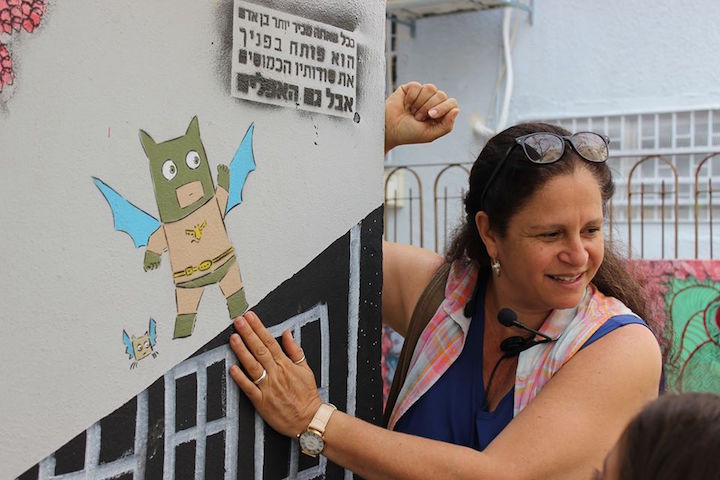
And you, yourself, began painting in the streets? When did you start and why?
I began about a year and a half ago. Why? Because I love the idea of connecting with others — even if I never meet them face to face — through my words on the walls. It is one heart touching another. And — as a result — the anonymous city becomes less anonymous and, maybe, even a bit intimate!
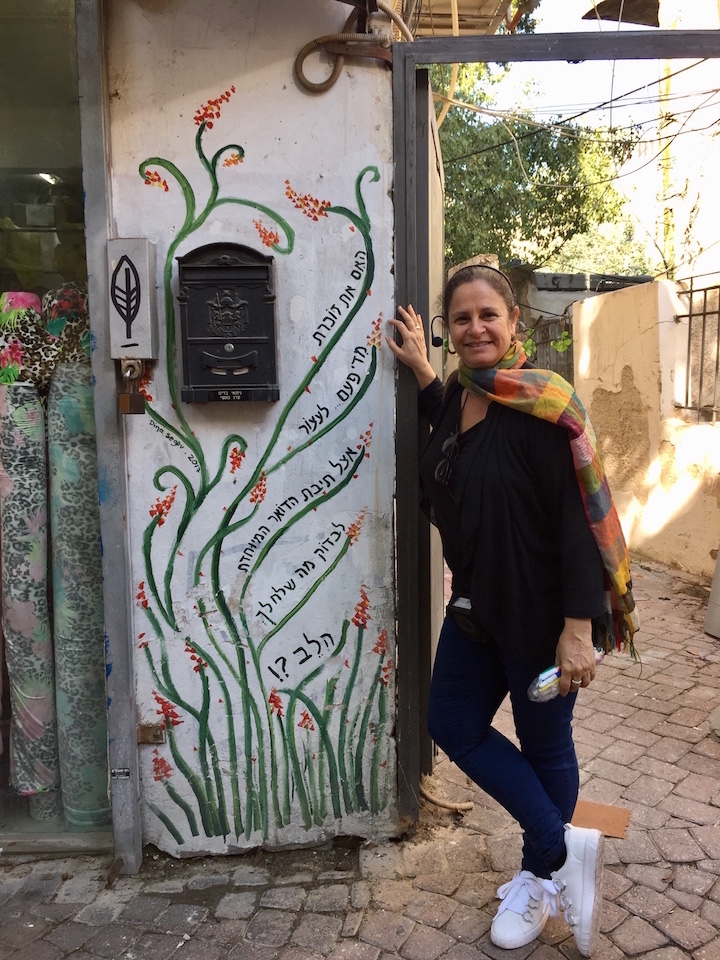
What about the folks — from school children to retirees — who have participated in your tours and workshops? How have they responded to the street art you introduce them to?
They’ve been really appreciative and express great interest in what they see in the streets. Many begin to look at the streets as they never had before.
And what about the artists, themselves? How have they responded to what you are doing?
I’ve developed friendships with many of the artists, and they’ve been supportive of what I do. The artists are not comfortable, though, with those tour guides who lack the knowledge that a street art tour guide should have.
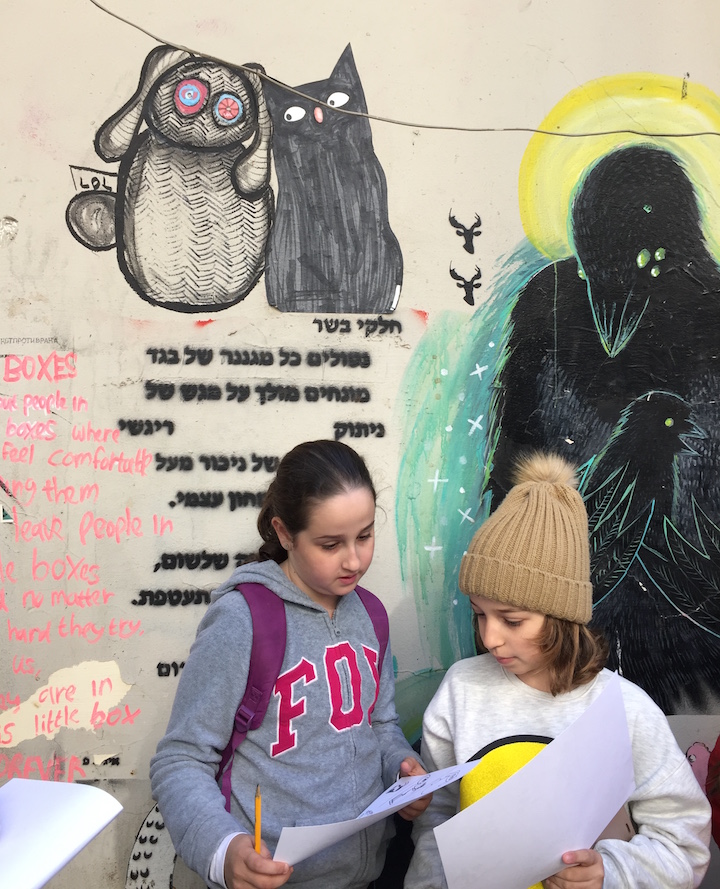
How has the street art scene in Tel Aviv changed since you first started observing it?
While some artists are no longer as active as they used to be, there are many new ones using the streets as their canvas, including more women. There is definitely more of a balance between males and females.
Can you tell us something more about what you offer?
I offer tours for all occasions and all ages. In addition to street art tours in Tel Aviv, Netanya and Jerusalem, I conduct tours of the graffiti exhibitions inside Tel Aviv’s Central Bus Station. I also present graffiti workshops and conduct lectures on the topic in a range of settings.
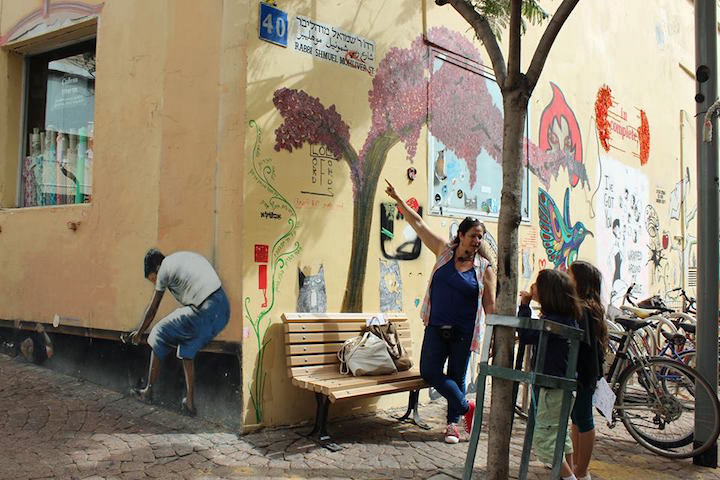
How can folks join your tours or participate in your workshops?
If you live abroad, you can contact me by email: Disegev@gmail.com. I can also be reached at this phone number: 052-3869500. And if you read and understand Hebrew, you can contact me via my website.
What’s ahead for you? Any long-term plans or goals?
More tours, more workshops and more lectures. And I’d like to travel to share my knowledge of Tel Aviv street art with others in cities throughout the globe. That is my ultimate goal! I’d, also, like to publish a children’s book about graffiti and maybe one for adults, too!
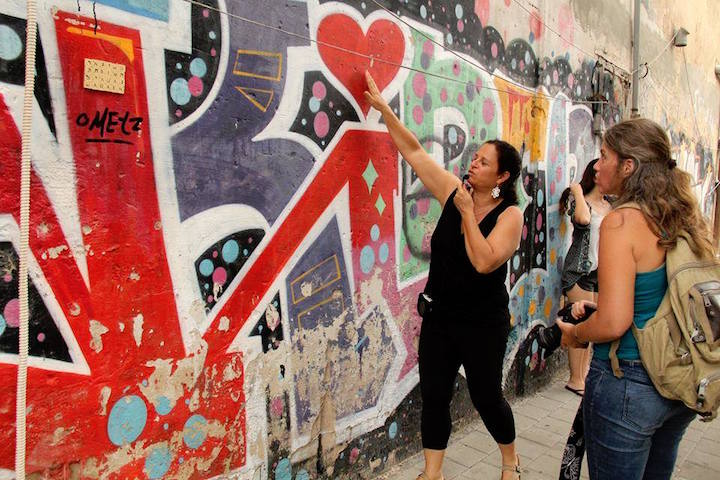
It all sounds great! Good luck!
Photo credits: 1 (with artwork by MR), 4 & 5 Lois Stavsky; 2, 3, 6 & 7 courtesy Dina Segev; interview conducted and edited by Lois Stavsky
Note: Hailed in a range of media from WideWalls to the Huffington Post to the New York Times, our Street Art NYC App is now available for Android devices here.

